Tata Harrier Review, First Drive Impressions
The 2018 Auto Expo was a big one for Tata Motors. Amidst a range of new alluring concepts, one that made the most headlines was the H5X concept, a Land Rover in Tata clothing. We flew over to Jodhpur, to drive the colossal Tata Harrier. Full review here.
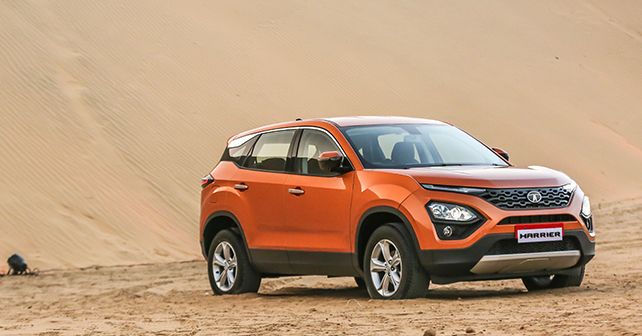
When Tata Motors completed the acquisition of Jaguar Land Rover in 2008, the first question that popped up in everyone’s mind was – will we now see a Land Rover in Tata clothing or rather metal sheets? Well, after years of brainstorming, planning and changing platforms from the Freelander to the current Discovery Sport, Tata showcased their new beast, the H5X Concept, now known as the Harrier, at the 2018 Auto Expo, giving us a glimpse of what we can expect in the future from the Indian manufacturer. No doubt the Harrier is the most talked about SUV of this year, and therefore, we flew to Jodhpur, brimming with anticipation, to drive this SUV to Khimsar – a village situated at the edge of the Thar desert – and back. So, let’s find out how it performs in real-world conditions.

If you’ve got it, flaunt it
The H5X concept was undoubtedly stunning, and thankfully Tata Motors has retained most of its design DNA in the Harrier, making it a very good-looking SUV. In fact, it comes across as the next-generation Land Rover Discovery, especially in Calisto Copper colour. What stands out is its nose’s unique design, which is divided into three different layers. The first section is the sleek looking DRLs housed along with the all-black mesh grille. Below that are the chunky projector headlamps along with the fog lights, and then the lower lip of the bumper comes with a faux skid plate, adding enough brawn to the SUV. Coming to the side profile, you can notice flared wheel arches, not unlike the Nexon, which gives the SUV an imposing road presence. The bold creases cutting across the doors, from the A-pillar all the way to the floating C-pillar and then merging into the LED tail lights, are hard to miss and add to its overall presence. Speaking of the C-pillar, it also gets a chunky silver insert with Harrier inscribed on it – quite a neat touch indeed. The Harrier is paired with 17-inch, 5-spoke alloy wheels, which do look slightly small. It could’ve done with 18-inch rims like its rivals – the Jeep Compass and the Mahindra XUV 500. Personally, from the rear, I think the Harrier looks very similar to the Discovery, but not as chunky and squarish though, which is a good thing. The piano black strip in between the taillights adds a sporty touch to the boot. The Harrier comes with logo projection lamps – which reminds you of the XUV 500 – placed beneath the outside rear-view mirrors, which is quite practical as it illuminates the floor.
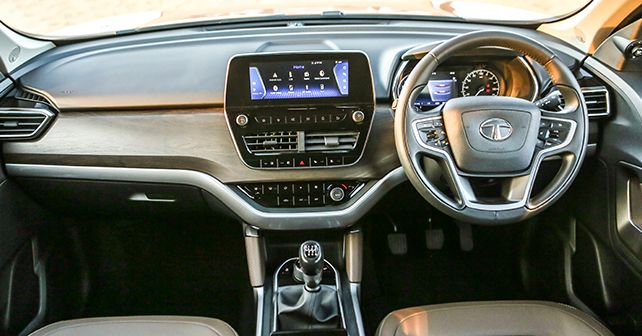
Living in opulence
Open the door, and the cabin reveals Tata’s rising tide in affluence. what attracts your attention instantly is the massive 8.8-inch infotainment touchscreen. It looks gorgeous and is intuitive. However, with thick bezels on the sides, it does look a bit small. An edge-to-edge display like current flagship smartphones would have made it even better. The dual coloured dashboard comes with oak wood finish and silver inserts below, while the top section is black plastic. The top-of-the-line Harrier also comes with a leather-wrapped steering wheel and gear knob as well as dark brown leather upholstery. The plastic quality is decent but not as good as, say, the Hexa, which feels a lot more upmarket. Tata Motors has tried to think out of the box by replacing the traditional handbrake with an aeroplane like pull lever. To be honest, we prefer the tried and tested handbrake, but it’s all about getting used to it. The Harrier comes with plenty of cubby holes apart from some smart storage like stowage tray in the glove box, mobile holders along with umbrella holder and bottle holders on the doors. Apart from cupholders in the front and in the rear armrest, the storage box between the driver’s and front passenger’s seats doubles up as a cool box.
Tata has given a lot of importance to passenger comfort, and that’s why they decided to ditch their original plan of using the erstwhile Freelander’s platform (2,650mm) and opted for the current Discovery Sport’s longer 2,741mm wheelbase. There’s plenty of leg and shoulder room in the cabin. But, with three adults sitting in the back, it can be a tight squeeze, as the transmission tunnel creates a hump on the floor. You may ask why the floor isn’t flat, as the Harrier is a front-wheel drive? Now that’s a pertinent question, but as it uses the Discovery Sport’s platform, which comes with a built-in tunnel, as it offers a no-nonsense four-wheel drive system, the Harrier is stuck with the same design. This also gives Tata in the future an option to introduce a 4x4 version of Harrier. Another thing worth mentioning is the well-designed seats, which provide adequate cushion and support for the back, but the seat squabs could have been bigger, as it lacks under-thigh support.

Behind the wheel
The Harrier is powered by the same 1,956cc turbocharged diesel engine as the Compass. Why source the engine from Fiat when they have JLR’s 2-litre diesel Ingenium engine? As everything comes down to brass tacks, it would’ve been very expensive for Tata, as this engine isn't made in India unlike the Fiat motor, which is manufactured at the Ranjangaon plant. Unlike the Jeep’s output of 170bhp, Tata has detuned this powerplant to 138bhp, as they wanted it to be fuel efficient. Consider that the Harrier weighs 1,675kg, making it 138kg heavier than the Compass, we began the drive with a bit of scepticism towards its performance. As I pressed the ignition button, the engine came to life. Slotting the 6-speed manual transmission, also sourced from the Fiat, to first gear, the Harrier cautiously built up speed. I straight away noticed that it wasn’t quick off its heels. Now like the Hexa, this new SUV also offers three drive modes – Eco, City and Sport. As we were driving in City mode, we expected it to show a bit more urgency, especially at slow speeds. And then I switched to Sport mode and never looked back after that. The throttle response felt peppier, as the Harrier was more than happy to zip pass other vehicles on the road. On the highway, it was cruising over the three-figure mark and felt very much at home. As the turbo lag was also down to minimal, the Harrier never felt like it was suffering from a power surge. In Sport mode, and with the aid of the first two gears, which have short ratios, the acceleration was quicker, unlike in other modes, where it felt lethargic.
As mentioned earlier, the Harrier is based on the Discovery Sport’s platform, but unlike the Land Rover, the Tata SUV doesn’t get rear independent suspension system, as this helped the company keep the cost down. The semi-independent system did a decent job and ensured that the Harrier provided a lush ride quality over broken roads, but it was a slightly firm for the rear passengers as they could feel the thud and the bump at times.
Unfortunately, we drove on predominantly straight roads, therefore, we can’t really comment too much on the Harrier’s handling capabilities, but as it’s based on a monocoque chassis, it felt more agile and lighter than its bigger sibling – the Hexa.
A hit or a miss?
There are many things that go in favour of the new Harrier, starting from its contemporary and fresh looks. The Discovery Sport’s chassis ensures good driving dynamics and, at the same time, it offers a comfortable ride. The cabin is spacious and well designed. The Harrier, like most modern vehicles, comes fully loaded with features like 6 airbags, ESP, ABS, traction control, ESC and ISOFIX anchor points. It also comes with three ESP terrain response modes – Normal, Rough and Wet. As good as this new SUV is, it does have a few some rough edges. For instance, high NVH levels as well wind noise, and access to the USB port tucked underneath the climate control can be challenging for most. Also, instead of using disc/drum brakes combination, Tata could’ve simply used all discs. So, in short, it comes down to its pricing – if the Harrier is priced competitively, it’s likely to give its competition a good run for their money.
Engine: 1,956cc / 4-Cylinders / 16 Valves / Turbocharged
Fuel: Diesel
Transmission: 6-Speed Manual / Front-Wheel Drive
Power: 138bhp @ 3,750rpm
Torque: 350Nm @ 1,750-2,500rpm
X-Factor: The Tata SUV that we’ve all been waiting for lives up to the hype – but only just. Expect more variants of the Harrier in the near future.
|
Pros |
Cons |



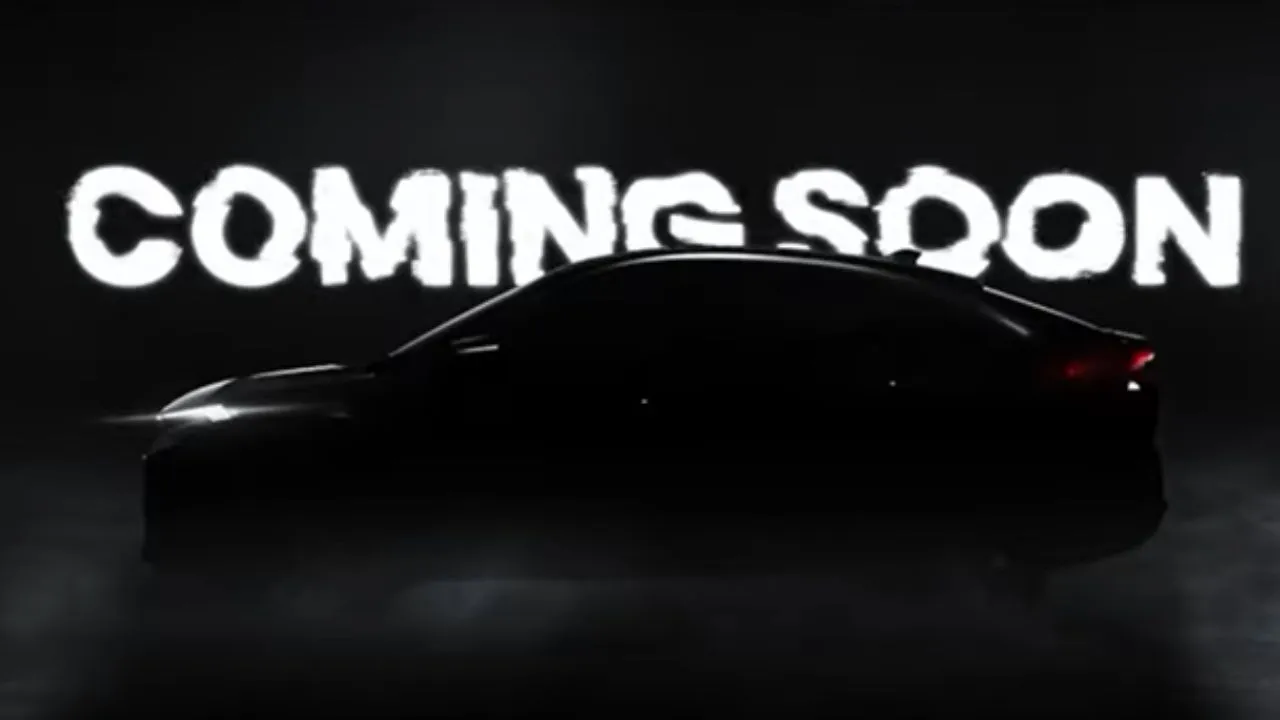



.webp)
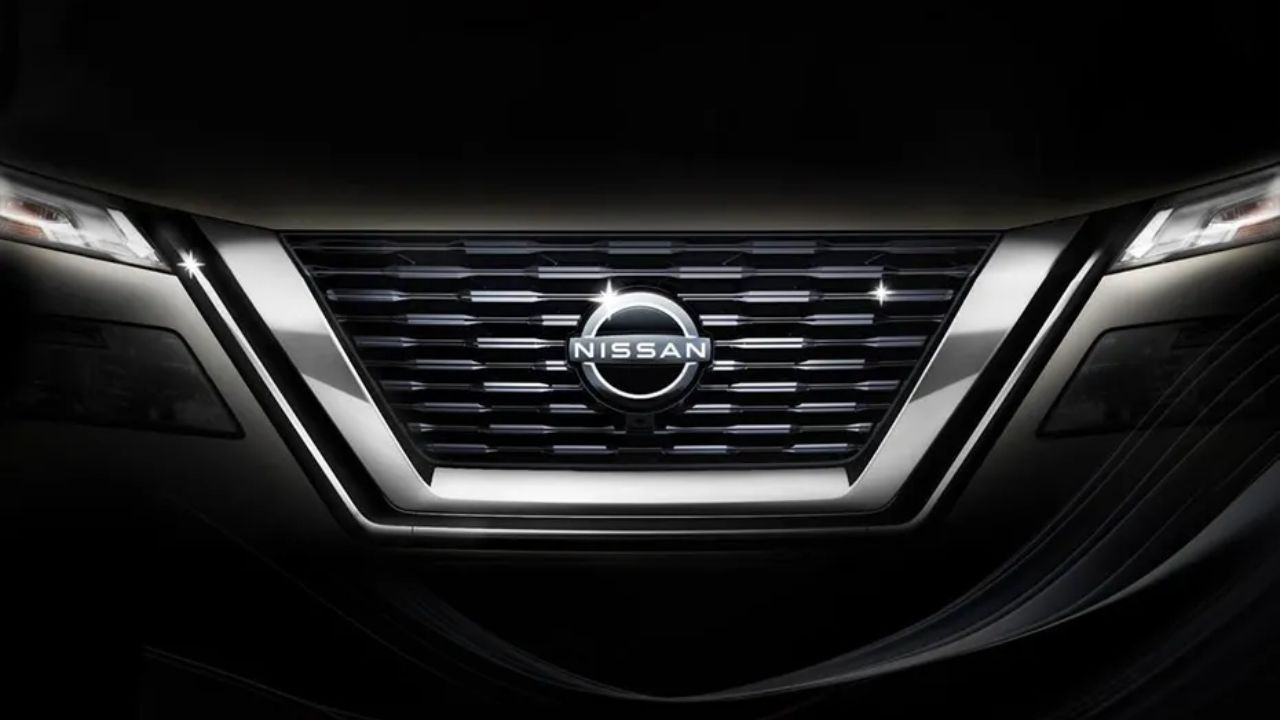
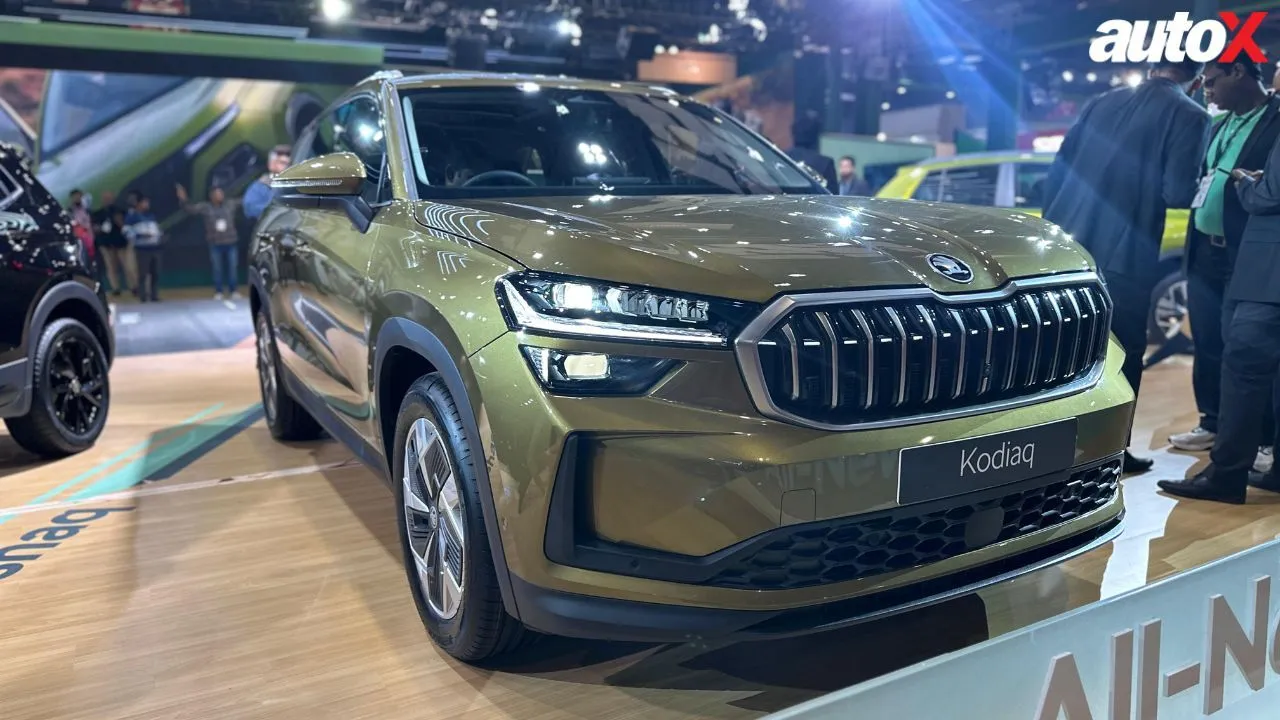
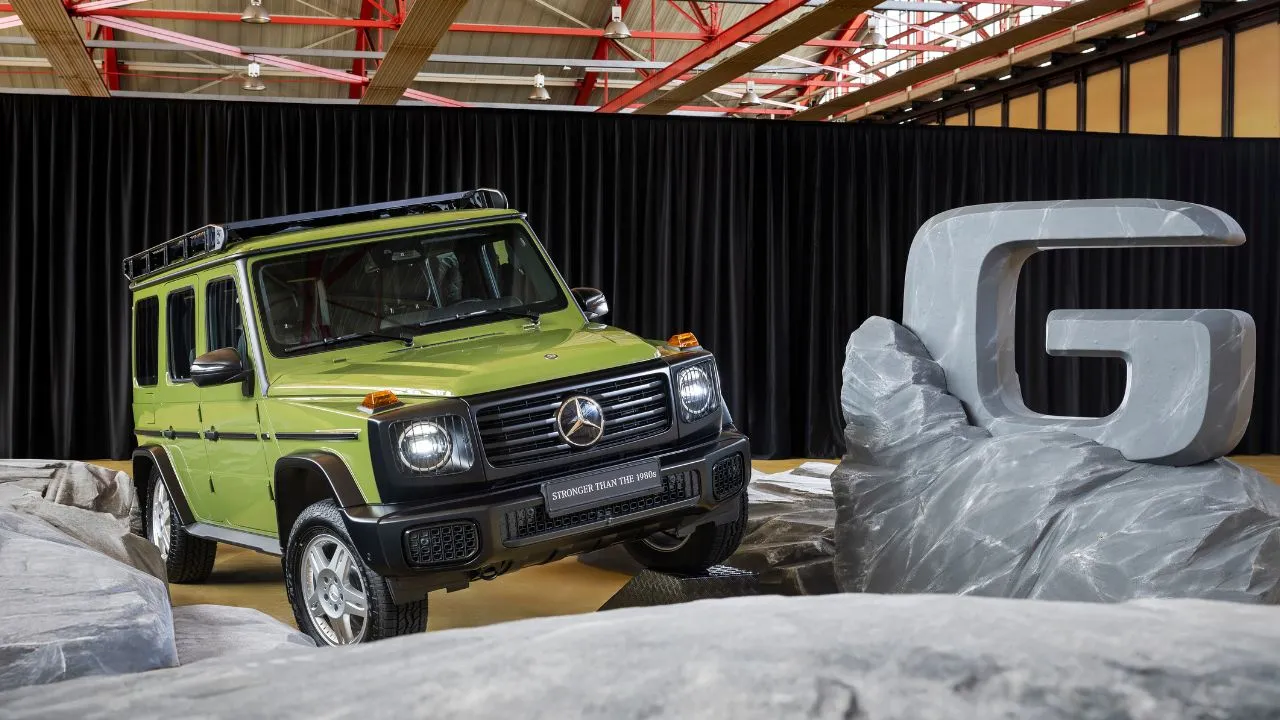
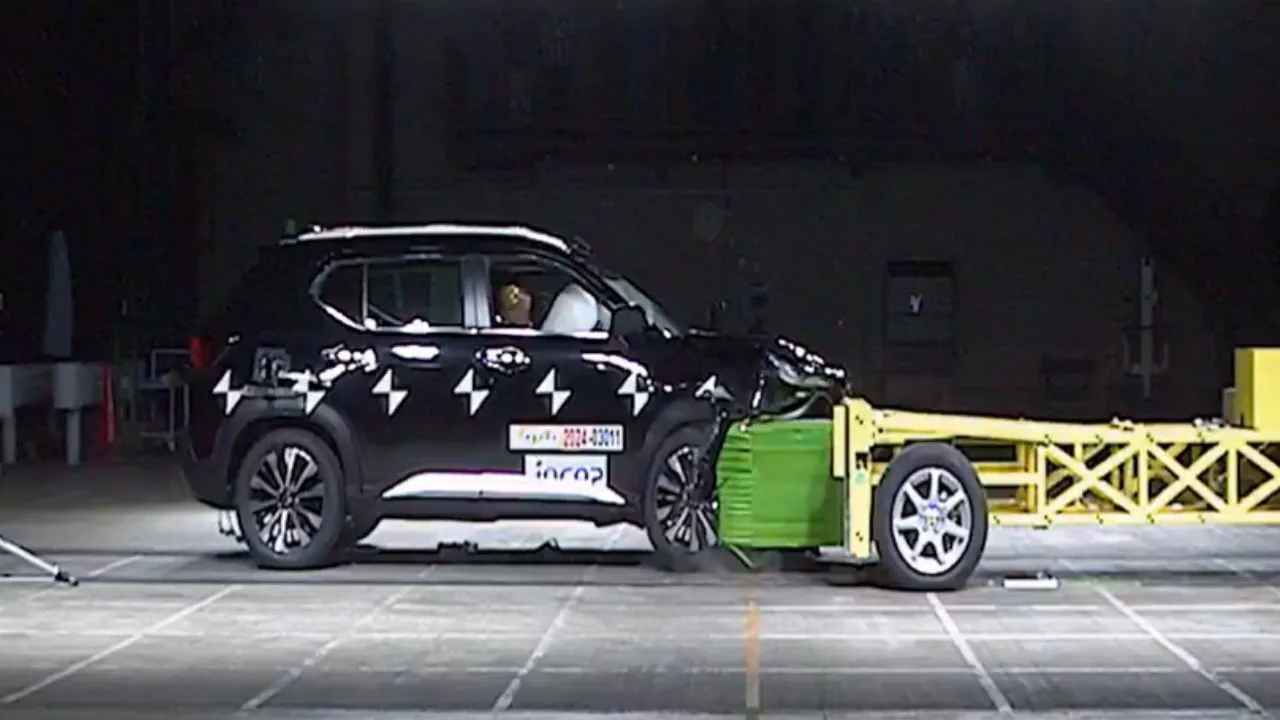



















Write your Comment on